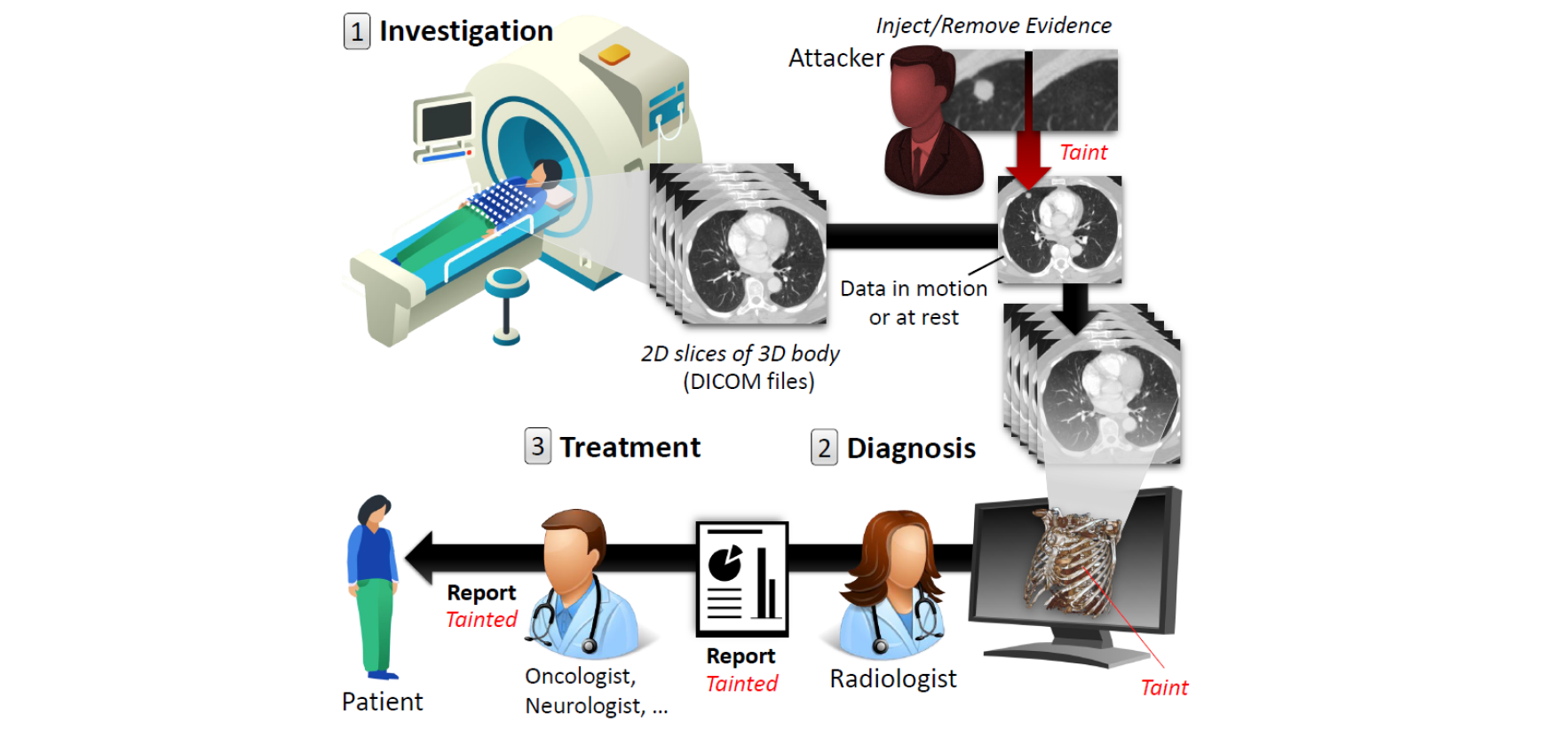CT-GAN: Malicious Tampering of 3D Medical Imagery using Deep Learning
In 2018, clinics and hospitals were hit with numerous attacks leading to significant data breaches and interruptions in medical services. An attacker with access to medical records can do much more than hold the data for ransom or sell it on the black market. In this paper, we show how an attacker can use deep-learning to add or remove evidence of medical conditions from volumetric (3D) medical scans. An attacker may perform this act in order to stop a political candidate, sabotage research, commit insurance fraud, perform an act of terrorism, or even commit murder. We implement the attack using a 3D conditional GAN and show how the framework (CT-GAN) can be automated. Although the body is complex and 3D medical scans are very large, CT-GAN achieves realistic results which can be executed in milliseconds. To evaluate the attack, we focused on injecting and removing lung cancer from CT scans. We show how three expert radiologists and a state-of-the-art deep learning AI are highly susceptible to the attack. We also explore the attack surface of a modern radiology network and demonstrate one attack vector: we intercepted and manipulated CT scans in an active hospital network with a covert penetration test. Demo video: https://youtu.be/_mkRAArj-x0 Source code: https://github.com/ymirsky/CT-GAN
PDF Abstract
 LIDC-IDRI
LIDC-IDRI